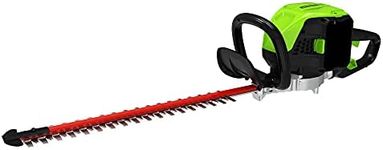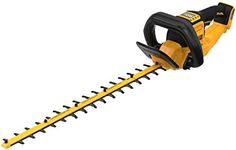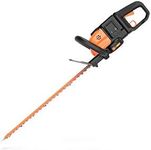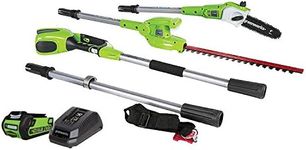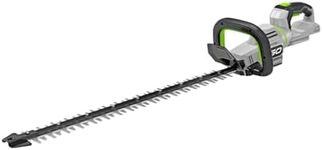Buying Guide for the Best Cordless Hedge Trimmers
Choosing the right cordless hedge trimmer can make garden maintenance much easier and more enjoyable. The key is to match the tool’s features to the size and type of hedges you have, as well as your own comfort and experience level. By understanding the main specifications, you can find a trimmer that is powerful enough for your needs, easy to handle, and convenient to use.Blade LengthBlade length refers to the cutting part of the trimmer and is usually measured in inches or centimeters. A longer blade can cut more hedge in one pass, making it ideal for large or tall hedges, while a shorter blade offers better control and is easier to maneuver around small or intricate shrubs. If you have big, straight hedges, a longer blade (20 inches or more) will help you work faster. For smaller or shaped hedges, a shorter blade (16-18 inches) gives you more precision and is lighter to handle.
Battery VoltageBattery voltage indicates the power of the trimmer. Higher voltage means more cutting power, which is useful for thicker branches and tougher hedges. Lower voltage trimmers are lighter and easier to handle, but may struggle with dense or woody growth. If your hedges are mostly soft and you want a lightweight tool, a lower voltage (18-20V) is usually enough. For larger or tougher hedges, look for higher voltage (36V or more) to ensure smooth cutting.
Battery Life (Runtime)Battery life, or runtime, tells you how long the trimmer can operate on a single charge. This is important if you have a lot of hedges to trim, as you don’t want to stop frequently to recharge. Shorter runtimes (20-30 minutes) are fine for small gardens, while longer runtimes (40 minutes or more) are better for bigger jobs. Consider how long it usually takes you to trim your hedges and choose a trimmer with a battery that matches your needs.
WeightWeight affects how comfortable the trimmer is to use, especially for longer periods. Lighter trimmers are easier to hold and maneuver, making them a good choice for people who may not have a lot of upper body strength or for trimming at awkward angles. Heavier trimmers can be more tiring but may offer more power. Think about how long you’ll be using the trimmer at a time and whether you’ll need to lift it above your head or use it for extended periods.
Cutting CapacityCutting capacity refers to the maximum branch thickness the trimmer can handle, usually measured in millimeters or inches. If your hedges have thick branches, you’ll need a trimmer with a larger cutting capacity. For fine, leafy hedges, a smaller capacity is sufficient. Check the typical thickness of your hedge branches and choose a trimmer that can comfortably cut through them without getting stuck.
Safety FeaturesSafety features like dual switches, blade covers, and hand guards help prevent accidents while using the trimmer. These features are especially important if you’re new to using power tools or if you’ll be working in tight spaces. Look for trimmers with clear safety mechanisms that are easy to use, and consider your own comfort level with power tools when deciding how many safety features you need.
